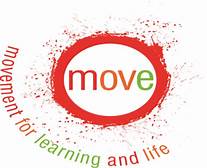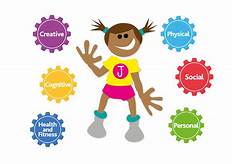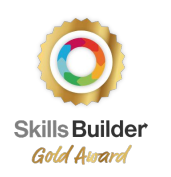Bridging to Learn Curriculum Offer
Intent
The aim of the Bridging to learn (B2L) curriculum is to provide a functional and effective learning experience to children and young people identified as meeting the B2L criteria. Willow Class is a pupil led provision which operates within a burst/pause structure which aims to lower the children’s anxiety, meet their individual sensory and communication needs, and encourage ownership of learning. The curriculum is divided in to thematic units, incorporating the core areas of English, Maths, PSHE, Science and PE, delivered in a motivating and immersive environment.
The main aims of the Bridging to Learn provision are to:
- Develop functional literacy and numeracy skills, relevant to each individual’s level of understanding
- Provide context about the world around them
- Establish independence in all areas of the pupils’ lives
- Increase the children’s ability to focus on tasks individually, and as part of a group
- Increase attention and response
- Develop the children’s working memory, knowledge retention and recall
- Develop communication by providing a “Communication Toolbox” which focuses on imperative and declarative communication
- Encourage engagement and participation, either collaboratively or independently
- Provide the opportunity for supporting adults to model positive communication skills, such as listening, eye contact, responding, reciprocity and respecting others’ opinions
Implementation
At Nancealverne School, we strive to ensure that all pupils have access to learning experiences which inspire curiosity and encourage participation. Every pupil is offered opportunities to learn at their own pace and in their own way, through motivating and engaging activities which help to meet and manage their needs.
To that end, we have differentiated learning pathways - offered in Maple and Willow Classes - that reflect the differing needs of all of our students. Provision and practice is underpinned by the Special Partnership Trust “Learning to Learn” policy - which outlines teaching and learning expectations for children and young people following the Learning to Learn (L2L) or Bridging to Learn (B2L) pathways – and the Engagement Model Guidance (2020).
B2L pupils are constantly provided with opportunities to complete tasks by and for themselves. Supporting adults try not to correct mistakes – such as putting on clothes inside out – unless there is a risk to the child’s safety if we do not. This fosters a sense of pride in the child’s own achievements, encouraging them to keep trying.

Communication: Children are initially encouraged to make requests (imperative communication) by being offered choices of highly motivating activities. These choices can be made either during specific sessions or in a self-directed way by selecting symbols from core boards which are always available. Pupils are also encouraged to make comments or statements (declarative communication) which encompasses a huge variety of opportunities to communicate. Examples include commenting on the weather, who is in class today, expressing likes and dislikes, making “I see…” or “I hear…” statements and answering questions about stories or activities. Using communication for other reasons than to make requests is a vital social skill which Willow Class staff are always eager to assist the children to develop.
Attention Autism: Attention Autism is a learning approach that aims to develop natural and spontaneous communication skills in our learners through the use of visually based and highly motivating activities. It offers our pupils an “irresistible invitation to learn” through a four stage structure with clear and consistent expectations. Although it is primarily a communication strategy, our learners have had enormous success when learning about all aspects of the curriculum though Attention Autism. They have learned how to be a Blacksmith, cleaned plastic pollution from the sea bed and observed a minute silence on Remembrance Day. At Nancealverne, Dave is our lead practitioner. He has completed training and coaching with Gina Davies and has delivered Attention Autism sessions to all classes.
Colourful Semantics: Colourful Semantics is an approach aimed at helping children to develop their sentence structure and communication. It is rooted in the meaning of words and reassembles sentences by cutting them up into their thematic roles and then colour coding them. It is a highly effective visual way of coding the information in words and sentences. It helps our learners to understand how the meaning of words are linked in sentences. Question words are linked to this meaning, with each question word being a designated colour. Pupils are encouraged to create sentences when offered a familiar prompt. Colourful Semantics is an excellent way to gauge reading comprehension and receptive communication for pupils who rely on symbols to communicate.

Regulation and Well-Being: All school pupils are offered lots of opportunities for regulation and activity breaks, as well as daily sensory circuits. Willow Class have wellbeing targets included on their termly PLGs and are encouraged to contribute to their own well-being profiles.
Use of activities such as Rebound Therapy, parachute games, swimming and hydrotherapy, soft play, walks in the community and horse riding all help to meet the children’s movement and physical needs, providing them with opportunities to explore and enjoy physical exercise. Pupils are also offered regular access to calming activities aimed at promoting well-being. These include massage and massage stories, TacPac and TacPac Handypac, mindfulness sessions and yoga.
Workstation: Every pupil in Willow Class has the opportunity to explore set tasks at their work station. As every child has their own learning style and speed, these tasks are set specifically for them, keeping their strengths and areas for development in mind. B2L pupils will typically complete four subject specific tasks which provide stretch and challenge for them. The Workstation is set up to provide the children with time and space to concentrate on their tasks while an adult observes their progress. The children’s fluency and independence when completing these activities is recorded and discussed by the supporting adults at the end of each week. This evidence builds across the year, creating a narrative so that all Willow Class staff can develop their tasks going forward.
Multi-Sensory Experiences: Every pupils’ sensory needs are supported with specific guidance detailed on the EHCP. Plans and objectives are written by professionals and embedded within the day to day structure for all individuals. In order to combine learning and sensory development, specific needs must be met within the programme of study. This may include specific targets and provision for visual stimulation; auditory attention and discrimination; fine and gross motor operation; tactile development. Skills and engagement are scaffolded from passive sensory experiences, through curiosity and exploration to purposeful engagement, with sensory cues supporting working memory to retrieve information. The complexity of information conveyed through a sensory approach depends on the learners, the concepts and the environment.
Play and Leisure: There are very many functions of play, among them being to help the children to experience and learn about interaction with others; learn new skills in a safe environment; explore the surrounding world; develop fine and gross motor skills, flexibility of thought and theory of mind. Shared play experiences offer the children regular opportunities for social thinking and communication, as well as creating safe experiences that further inform the children’s understanding of the world around them. Examples of this include exploring equipment that children may encounter at the doctor or dentist, or using kitchen toys to learn that a kettle will feel hot.
The main areas of play in the B2L curriculum are:
- Sensorimotor and Messy Play: Children learn best when they actively engage with the environment and use all their senses. Some of our learners are in a very concrete stage of development - they need to see and feel their world in order to understand it
- Socio-dramatic & Functional Play: providing the opportunity for pupils to engage in and explore objects and activities relating to more structured learning as well as offering context for the world about them
- Structured Play: games played one to one or in a group which have specific roles or rules
All areas of play aim to develop the children’s ability to communicate; turn take; attend and respond to peers and adults; make self-directed choices; develop functional independence skills within highly motivating activities; maintain focus, engagement and participation and develop preferences.
Core Learning (please see subject areas for further information)
Subject specific learning for B2L pupils remains within the core areas of English, Maths, PSHE, Science and PE. These are delivered using a topic approach which fits the horizontal learning style of the Willow Class cohort. Skills are developed through familiar tasks and structures which consolidate the children’s use and understanding of concepts without the activities becoming repetitious. Pupils are encouraged to develop symbol literacy through activities such as sorting, choice making and creating sentences using the Colourful Semantics approach. These activities further develop the children’s ability to communicate and express themselves.
Due to the way that the children in Willow Class engage with their learning, tasks need to be regularly repeated in order for skills to be properly consolidated and generalised. Sequencing of next steps is dictated by each child’s ability to demonstrate understanding of expectations and concepts. We work around this by regularly changing the “vehicle” that delivers the learning so that the children do not tire of the activity and therefore maintain curiosity. We do this so that we are able to gauge their ability to
- Decipher the information we are providing
- Take meaning from stimuli
- Respond to targeted questions that assess their knowledge retention and working memory.
English: Willow Class cover reading, writing, spoken language and phonics in lots of different ways: as a whole class group; in smaller, adult led groups and one to one. When a new driving text is introduced, we initially share the story as a group, with longer stories being broken down in to a shorter narrative that the children can see and understand. Subsequent English sessions focus on each of the other areas in turn.
Phonics: Phonics sessions take place each day, with tasks and activities tailored to each pupil’s individual level. Shared phonics tasks focus on environmental sounds and sound discrimination, letter recognition, whole word recognition and environmental text.
Maths: B2L pupils have the opportunity to explore specific maths activities that cover the main areas of the formal maths curriculum: Number & place value and Geometry & measure. These sessions are themed around the driving text in order to provide context for the children as well as continuing to develop their working memory. All Willow Class pupils participate in regular non-subject specific learning that reinforce maths concepts, such as number songs, exploring colour and shape or focus on time and routine. Functional maths learning is personalised to provide a useful and translatable skill set that create a foundation for independent learning and living.
PSHCE: Willow Class follow the scheme of work laid out for the secondary pupils. The areas of PSHCE curriculum are broken down with a different area of focus for each full term. These are: Self -awareness and Managing feelings; Living in the wider world / the world I live in; Health and wellbeing and self-care, support and safety.
Topic: Activities in this area support the children’s understanding of the world around them and includes aspects of science, history, religious education, geography and modern foreign languages. There is particular focus on time – days, months, seasons, etc – as well changes in weather and the physical world around us. This encourages the children’s environmental literacy and expands their understanding and interest in their whole lived experience. Festivals from our own and others’ cultures are researched and celebrated, typically through food, music and art. Our focus is aimed at making both religious and traditional occasions meaningful to and for the children, as well as providing new experiences which enrich their enjoyment of learning.
Impact
Focusing all areas of the children’s learning on independence, as well as allowing them constant opportunities to explore at their own pace and within their own learning style, encourages a love of learning that matures with the pupils. Developing functional skills that the pupils can maintain and utilise throughout their lives is the driving motivation for the B2L provision and the school as a whole. Establishing independence provides the pupils with a sense of achievement that fosters their continued engagement, participation and ownership of learning.
Regular access to interventions such as Attention Autism, Intensive Interaction and Colourful Semantics has vastly increased the pupil’s receptive and expressive communication, as well as increasing their ability to remain focused during group and one to one learning opportunities. Focus on working memory and knowledge recall helps the pupils to transfer skills between tasks and establishes central coherence that connects their understanding of the word, their education and how they can use their skills across all areas of their lives.


1. Communication & Interaction
Imperative Communication
- Can utilise communication strategies to make requests, express preference and have needs met.
- Understands and responds to direction.
- Is supported in a Total Communication, language rich environment.
Social Interaction
- Understands social cues during interaction.
- Can operate as part of a social group, engaging in coactive or collaborative play and exploration.
- Recognises and responds to preferred adults and peers.
2. Cognition & Learning
Engagement & Participation
- Engagement is triggered by motivating stimuli.
- Can follow direction and expectation during learning opportunities.
- Demonstrates curiosity during exploration.
Problem solving & Resilience
- Exploring tasks and activities in increasingly complex ways.
- Developed attention, including shared attention, switching attention between activities, turn taking and attention on independent tasks.
- Increased frustration tolerance and persistence.
3. Social, Emotional & Mental Health
A sense of physical & emotional security
- Builds trusting relationships with supporting adults.
- Anticipates routine and structure, but can maintains regulation during unexpected changes.
- Calmer during times of transition.
- Engagement in learning is more easily triggered and sustained.
Wellbeing, regulation & reactions
- Recognises, requests and responds to personal regulation strategies.
- Reduction of fight/flight/freeze/sensory arousal.
- Engages with personalised wellbeing plans and activities.
4. Sensory & Physical
Sensory integration
- Has appropriate motor responses to sensory stimuli, such as turning towards the source of sounds.
- Registers and processes sensory information, from passive exploration through curiosity and exploration to purposeful engagement, with sensory cues supporting working memory to retrieve information.
Physical development
- Development of fine and gross motor operation.
- Development of coordination, balance and agility.
- Engages with structured physiotherapy plans which develop strength and mobility.
Whilst we follow the objectives of a structured subject-specific curriculum, we offer highly differentiated and personalised learning programmes. We deliver a specialist, high-quality, and relevant education. This focuses on personal skills and academic achievement, setting high expectations for all. We appreciate that students may not be working at age-related or key-stage expectations, and therefore measure progress from individual starting points.










